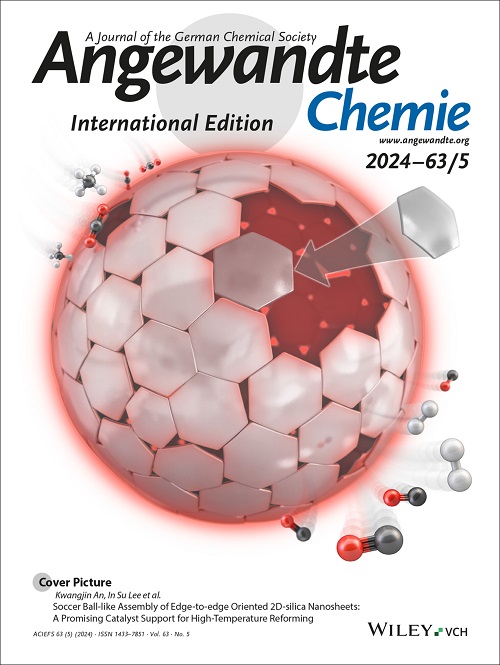Zwitterion-Modified NiFe OER Catalyst Achieving Ultra-Stable Anion Exchange Membrane Water Electrolysis via Dynamic Alkaline Microenvironment Engineering
IF 16.1
1区 化学
Q1 CHEMISTRY, MULTIDISCIPLINARY
引用次数: 0
Abstract
The development of efficient non-precious metal electrocatalysts for industrial anion exchange membrane water electrolysis (AEM-WE) remains challenging, primarily due to sluggish OH– transfer from the anion exchange membrane (AEM) to catalytic sites, causing H+ accumulation and performance degradation. Herein, we developed a zwitterion-modified NiFe catalyst (z-NiFe) through gradient soaking, facilitates rapid OH– transfer across the AEM-electrocatalyst interface, effectively neutralizing the generated H+ and enhancing catalytic performance. In-situ Raman spectroscopy and OH− conductivity measurements reveal an alkaline-enriched surface environment, which inhibits H+ accumulation-induced chemical corrosion and enhances water oxidation performances. Density functional theory (DFT) analysis demonstrates that zwitterions stabilize adsorbed oxygen during catalysis, and reduce the overpotential of oxygen evolution reaction (OER). The z-NiFe shows an ultralow Tafel slope (28.5 mV dec−1) and high activity (190 mV overpotential at 1,000 mA cm−2) in 1 M KOH. When integrated into an AEM-WE system, the z-NiFe-catalysed AEM-WE device exhibits a low cell voltage of 1.76 V at 1,000 mA cm−2 and record-breaking durability over 14,000 h, with a voltage degradation rate of 12.3 μV h−1, representing a significant advancement in AEM-WE technology.两性离子修饰的NiFe OER催化剂通过动态碱性微环境工程实现超稳定阴离子交换膜电解
工业阴离子交换膜水电解(AEM-我们)的高效非贵金属电催化剂的开发仍然具有挑战性,主要是由于OH -从阴离子交换膜(AEM)到催化位点的转移缓慢,导致H+积累和性能下降。本文通过梯度浸泡的方法,开发了两性离子修饰的NiFe催化剂(z-NiFe),促进了OH -在aem -电催化剂界面上的快速转移,有效中和了生成的H+,提高了催化性能。原位拉曼光谱和OH -电导率测量表明,富碱性表面环境抑制了H+积累引起的化学腐蚀,提高了水氧化性能。密度泛函理论(DFT)分析表明,两性离子在催化过程中稳定了吸附的氧,降低了析氧反应的过电位。在1 M KOH条件下,z-NiFe具有超低的Tafel斜率(28.5 mV dec−1)和高活性(1000 mA cm−2过电位190 mV)。当集成到AEM-WE系统中时,z- nfe催化的AEM-WE器件在1,000 mA cm - 2时具有1.76 V的低电池电压,并且具有超过14,000 h的破纪录的耐用性,电压降解率为12.3 μV h - 1,代表了AEM-WE技术的重大进步。
本文章由计算机程序翻译,如有差异,请以英文原文为准。
求助全文
约1分钟内获得全文
求助全文
来源期刊
CiteScore
26.60
自引率
6.60%
发文量
3549
审稿时长
1.5 months
期刊介绍:
Angewandte Chemie, a journal of the German Chemical Society (GDCh), maintains a leading position among scholarly journals in general chemistry with an impressive Impact Factor of 16.6 (2022 Journal Citation Reports, Clarivate, 2023). Published weekly in a reader-friendly format, it features new articles almost every day. Established in 1887, Angewandte Chemie is a prominent chemistry journal, offering a dynamic blend of Review-type articles, Highlights, Communications, and Research Articles on a weekly basis, making it unique in the field.

 求助内容:
求助内容: 应助结果提醒方式:
应助结果提醒方式:


